San Sebastián, officially known by the bilingual name Donostia / San Sebastián (Basque: [doˈnos̺ti.a], Spanish: [san seβasˈtjan]), is a city and municipality located in the Basque Autonomous Community, Spain. It lies on the coast of the Bay of Biscay, 20 km (12 miles) from the France–Spain border. The capital city of the province of Gipuzkoa, the municipality's population is 188,102 as of 2021, with its metropolitan area reaching 436,500 in 2010. Locals call themselves donostiarra (singular), both in Spanish and Basque. It is also a part of Basque Eurocity Bayonne-San Sebastián.
The economic activities in the city are dominated by the service sector, with an emphasis on commerce and tourism, as San Sebastián has long been well-known as a...Read more
San Sebastián, officially known by the bilingual name Donostia / San Sebastián (Basque: [doˈnos̺ti.a], Spanish: [san seβasˈtjan]), is a city and municipality located in the Basque Autonomous Community, Spain. It lies on the coast of the Bay of Biscay, 20 km (12 miles) from the France–Spain border. The capital city of the province of Gipuzkoa, the municipality's population is 188,102 as of 2021, with its metropolitan area reaching 436,500 in 2010. Locals call themselves donostiarra (singular), both in Spanish and Basque. It is also a part of Basque Eurocity Bayonne-San Sebastián.
The economic activities in the city are dominated by the service sector, with an emphasis on commerce and tourism, as San Sebastián has long been well-known as a tourist destination. Despite the city's relatively small size, events such as the San Sebastián International Film Festival and the San Sebastian Jazz Festival have given it an international dimension. San Sebastián, along with Wrocław, Poland, was the European Capital of Culture in 2016.
 British siege of San Sebastián in 1813
British siege of San Sebastián in 1813 Basilica of Saint Mary of the Chorus
Basilica of Saint Mary of the Chorus Early 20th century residential building (city centre)
Early 20th century residential building (city centre) Venue of the Regional Government in the Gipuzkoa Plaza
Venue of the Regional Government in the Gipuzkoa Plaza Victoria Eugenia Theatre at night
Victoria Eugenia Theatre at night Maria Cristina Hotel
Maria Cristina Hotel Port of San Sebastián in 1890
Port of San Sebastián in 1890 Igeldo Lighthouse
Igeldo Lighthouse Santa Catalina Bridge after erection of the Maria Cristina Bridge (1905–1910)
Santa Catalina Bridge after erection of the Maria Cristina Bridge (1905–1910)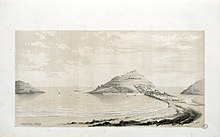 San Sebastián in 1843, by Eugène de Malbos
San Sebastián in 1843, by Eugène de Malbos Donostia's Amara before river canalization in the mid 20th century
Donostia's Amara before river canalization in the mid 20th century Ondarreta gardens, and former prison by the beach (far background)
Ondarreta gardens, and former prison by the beach (far background) Outlying rural areas were absorbed during the 1960s (Loiola)
Outlying rural areas were absorbed during the 1960s (Loiola)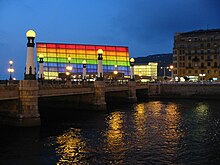 Kursaal Congress Centre and Zurriola Bridge over the Urumea riverPrehistory
Kursaal Congress Centre and Zurriola Bridge over the Urumea riverPrehistory
The first evidence of human stationary presence in the current city is the settlement of Ametzagaña, between South Intxaurrondo and Astigarraga. The unearthed remains, such as knapped stones used as knives to cut animal skin, date from 24,000 to 22,000 BC. The open-air findings of the Upper Paleolithic have revealed that the settlers were modern human (Homo sapiens) hunters, besides pointing to a much colder climate at the time.[1]
AntiquityThere were Roman settlements (from around 50-200 AD) in what is now the Old Part of the city, according to excavations carried out in the convent of Santa Teresa, on the slopes of Urgull.[2]
San Sebastián is thought to have been in the territory of the Varduli tribe in the Roman times. 10 km (6 mi) east of the current city lay the Basque Roman town of Oiasso (Irun) which was subsequently incorrectly identified with San Sebastián for some time by many historians.[citation needed]
Middle AgesNo written records about the place are known until, in 1014, the monastery of Saint Sebastian with its apple orchards for cider production, then located within the boundaries of the town of Hernani, was reportedly donated to the Abbey of Leire by Sancho III of Pamplona. By 1181, the city was chartered (given the fuero) by king Sancho VI of Pamplona on the site of Izurum, having jurisdiction over all the territory between the rivers Oria and Bidasoa.
In 1200, the city was conquered by Castile, whose king Alfonso VIII, confirmed its charter (fuero), but the Kingdom of Navarre was deprived of its main direct access out to the sea. Perhaps as soon as 1204 (or earlier), the city nucleus at the foot of Urgull started to be populated with Gascon-speaking colonizers from Bayonne and beyond, who left an important imprint in the city's identity in the centuries to come.[3]
In 1265, the use of the city as a seaport was granted to Navarre as part of a wedding pact. The large quantity of Gascons inhabiting the town favoured the development of trade with other European ports and Gascony. The city steered clear of the destructive War of the Bands in Gipuzkoa, the only town in doing so in that territory. In fact, the town only joined Gipuzkoa in 1459 after the war came to an end.[3] Up to the 16th century, Donostia remained mostly out of wars, but by the beginning of the 15th century, a line of walls of simple construction is attested encircling the town. The last chapter of the town in the Middle Ages was brought about by a fire that devastated Donostia in 1489. After burning to the ground, the town began a new renaissance by building up mainly with stone instead of bare timber.
Modern AgeThe advent of the Modern Age brought a period of instability and war for the city. New state boundaries were drawn that left Donostia located close to Spain's border with France; thicker and more sophisticated walls were erected, with the town becoming involved in the 1521–1524 military campaigns that formed part of the Spanish conquest of Navarre. The town provided critical naval help to Emperor Charles V during the siege of Hondarribia, which earned the town the titles "Muy Noble y Muy Leal", recorded on its coat of arms. The town also aided the monarch by sending a party to the Battle of Noain and providing help to quash the Revolt of the Comuneros in 1521.
After these events, Gascons, who had played a leading role in the political and economic life of the town since its foundation, began to be excluded from influential public positions by means of a string of regional sentences upheld by royal decision (regional diets of Zestoa 1527, Hondarribia 1557, Bergara 1558, Tolosa 1604 and Deba 1662).[3] Meanwhile, the climate of war and disease left the town in a poor condition that drove many fishermen and traders to take to the sea as corsairs as a way of getting a living, most of the times under the auspices of the king Philip II of Spain, who benefited from the disruption caused to and wealth obtained from the French and Dutch trade ships.
In 1660, the city was used as the royal headquarters during the marriage of the Infanta to Louis XIV at Saint-Jean-de-Luz nearby. After a relatively peaceful 17th century, the town was besieged and taken over by the troops of the French Duke of Berwick up to 1721. However, San Sebastián was not spared by shelling in the French assault and many urban structures were reconstructed, e.g. a new opening in the middle of the town, the Plaza Berria (that was to become the current Konstituzio Plaza).
In 1728, the Guipuzcoan Company of Caracas was founded and boosted commerce with the Americas. Thanks to the profit the company generated, the town underwent some urban reforms and improvements and the new Santa Maria Church was erected by subscription. This period of wealth and development was to last up to the end of 18th century.[4]: 56/58
In 1808, Napoleonic forces captured San Sebastián in the Peninsular War. In 1813, after a siege of various weeks, on 28 August, during the night, a landing party from a British Royal Navy squadron captured Santa Clara Island, in the bay. Situated on a narrow promontory that jutted out into the sea between the waters of the Bay of Biscay and the broad estuary of the Urumea River, the town was hard to get at and well fortified – "it was the strongest fortification I ever saw, Gibraltar excepted", wrote William Dent.[5] Three days later, on 31 August, British and Portuguese troops besieging San Sebastián assaulted the town. The relieving troops ransacked and burnt the city to the ground. Only the street at the foot of the hill (now called 31 August Street) remained.
Contemporary historyAfter these destructive events, reconstruction of the city was commenced in the original location with a slightly altered layout. A modern octagonal layout as drafted by the architect P.M. Ugartemendia was turned down and eventually M. Gogorza's blueprint was approved, then supervised and implemented by the Ugartemendia. This area, the old town, has a neoclassical, austere and systematic style of architectural construction. Constitution Square was built in 1817 and the town hall (currently a library) between 1828 and 1832.[6]: 100 Housing in the old town was built gradually alongside the rest of the area.
The liberal and bourgeois San Sebastián became the capital of Gipuzkoa (instead of Tolosa) until 1823, when absolutists besieged the town (only 200 inhabitants remained in the town when the offensive troops entered). It was designated again as the capital in 1854.[7] In 1835-6, the British Auxiliary Legion under Sir George de Lacy Evans defended the town against the Carlist besiegers. Some of those who died were buried in the English Cemetery on Mount Urgull.
At the beginning of the 19th century, the local government was still ruled by the principle of nobility, while inhabitants of foreign origin or descent had always been numerous in the town, especially among the trading community. Although San Sebastián benefited greatly from the charter system established in the Southern Basque Country (foruak, with borders in the Ebro river and no duties for overseas goods), the town was at odds with the more traditional Gipuzkoa, even requesting secession from the province and annexation to Navarre in 1841.
In 1863, the defensive walls of the town were demolished (their remains are visible in the underground car park on the Boulevard) and an expansion of the town began in an attempt to move on from its previous military function.[8] Jose Goicoa and Ramon Cortazar were appointed to oversee the work. They modelled the new city according to an orthogonal shape in a neoclassical Parisian style, and Goicoa designed several elegant buildings, such as the Miramar Palace and La Concha Promenade.[6]: 145–146 The city was chosen by the Spanish monarchy as a summer retreat following the French example of nearby Biarritz, and Spanish nobility and the diplomatic corps opened residences in the town. As the "wave baths" at La Concha were in conflict with nearby shipbuilding activity, the shipyards relocated to Pasaia, a nearby bay that had formerly been part of San Sebastián.
However, in 1875, war came to the town again, and in 1876 shelling over the city by Carlists claimed the life of acclaimed the poet Bilintx.[7] From 1885, King Alfonso XII of Spain's widow Maria Cristina spent every summer in Donostia along with her retinue, staying at the Miramar Palace. In 1887, a casino was built, which eventually became the current city hall, and some time later the Regional Government building was completed in Plaza Gipuzkoa following Jose Goicoa's design. Cultural life thrived in this period, giving rise to various events that still take place in the city, such as the Caldereros or the Tamborrada, and journalistic and literary works in both Spanish and Basque.
After much debate in the city over whether to pursue an economy based on tourism or manufacturing, Donostia developed into a fully-fledged seaside resort, but some industry developed in the district of Antiguo and on the outskirts of the city. Following the outbreak of World War I, San Sebastián became a destination for renowned international figures of culture and politics,[7] including Mata Hari, Leon Trotsky, Maurice Ravel, and Romanones.
San Sebastián was one of earliest towns hit by the 1918 Influenza epidemic, dealing with a first wave outbreak in February of that year. Officials feared for the city's reputation and attempted to keep the disease's spread quiet, to no avail, and the outbreak soon spread throughout Spain.[9]
Various rationalist architectural works, typically white or light-coloured, were built in the 1920s and 1930s, such as La Equitativa, Nautico, and Easo. In 1924–1926, canalisation work was carried out on the Urumea river at the southern edge of the city. However, after the city's Belle Epoque in the European wartime, repression under Miguel Primo de Rivera's dictatorship was not favourable for the city. In 1924, gambling was prohibited by the authoritarian regime, causing existential problems for the Grand Casino and the Kursaal (1921).
In 1930, Spanish republican forces signed up to the Pact of San Sebastián, leading to the Second Spanish Republic. Unrest and repression did not stop with the new political regime, and large-scale industrial action was called several times by the growing anarchist, communist and socialist unions. The 1936 military coup was initially defeated by the resistance, led by the Basque Nationalists,[10]: 226 anarchists and communists, but later that same year the province fell to Spanish Nationalist forces during the Northern Campaign.[10]: 397 The occupation proved disastrous for the city's residents. Between 1936 and 1943, 485 people were executed as a result of show trials by the Spanish Nationalists (Requetés and Falangists).[11]: 431 It has been estimated that extrajudicial executions (paseos) by the occupying military forces accounted for over 600 murders in the area during the first months of occupation.[11]: 431 Many children were evacuated to temporary safety in Bilbao, with the city's population falling by an estimated 40,000 to 50,000 inhabitants.
In the aftermath of war, the city was stricken by poverty, famine and repression, coupled with a thriving smuggling trade. Many republican detainees were held at the beach-side Ondarreta Prison in grim and humid conditions, until the building was demolished in 1948. However, industrial development paved the way for urban expansion in the Egia and Amara Berri districts, on the marshes and riverbed of the Urumea, at the end of the 1940s and beginning of the 1950s.
In 1943, the first Basque language schools were established by Elvira Zipitria, who taught in Basque from her home in the Old Town. In 1947, the Grand Casino was converted into the City Hall.[6]: 95 In 1953, city businessmen organised the first San Sebastián International Film Festival to stimulate the economic life and profile of the city.
Mass immigration from other parts of Spain, spurred by growing industrial production, greatly increased the population, initiating rapid and chaotic urban development on the outskirts of the city (Altza, Intxaurrondo, Herrera, Bidebieta). Social, cultural and political conflicts followed, leading to popular dissatisfaction. Protests and street demonstrations became more common, driven by Basque nationalists (especially the armed separatist organisation ETA) and various underground unions, triggering the first state of emergency in Gipuzkoa in 1968. Several more were imposed by the Francoist authorities in the period immediately preceding Franco's death in 1975.
Amid the fragile economic situation and real estate speculation, the Kursaal and the Chofre bullring in Gros were demolished in 1973.[7] From 1975 to 1977, sculptor Eduardo Chillida and architect Luis Peña Ganchegui's landmark The Comb of the Winds was built at the western tip of the bay. The 1970s to the mid-1980s were years of general urban and social decay marked by social and political unrest and violence.
In 1979, the first democratic municipal elections were held, won by the Basque Nationalist Party, who held office along with splinter party Eusko Alkartasuna (Basque Solidarity) until 1991. The Spanish Socialist Workers' Party's Odon Elorza took over as mayor from 1991 until 2011, when he was defeated unexpectedly by Juan Carlos Izagirre (Bildu) in elections.[7]
From the 1990s, a major makeover of the city centre began, aimed at enhancing and revamping the neoclassical and modernist side of San Sebastián's architecture. Other regeneration projects included the reshaping and enlargement of Zurriola beach and promenade, the opening of the Kursaal Palace cubes (1999),[7] the new university campus and technology facilities in Ibaeta, the creation of a wide network of cycle lanes, underground car-parks and significant improvements to public transport. Districts of cutting-edge design have been erected, such as Ibaeta and Riberas de Loiola, while some other major public works are still pending confirmation of funding and approval.








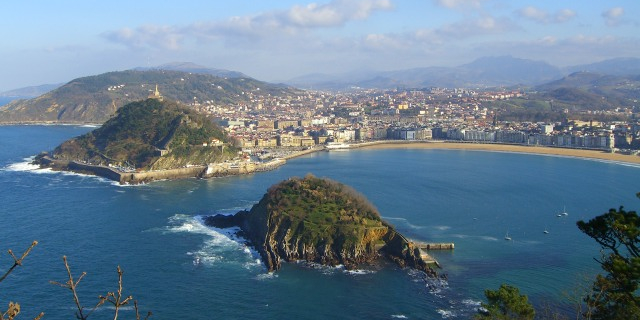























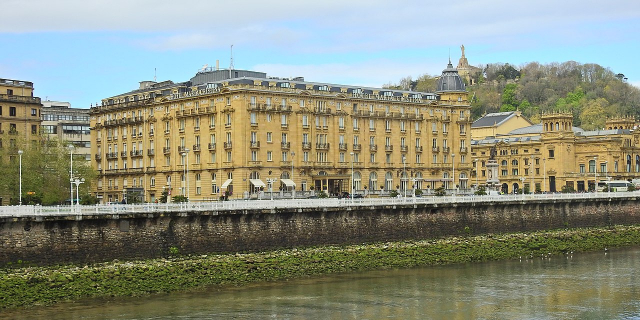



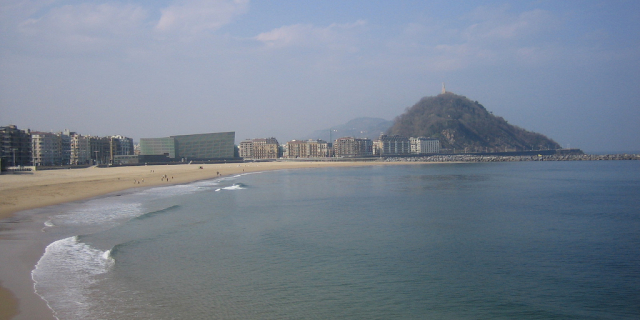


Add new comment